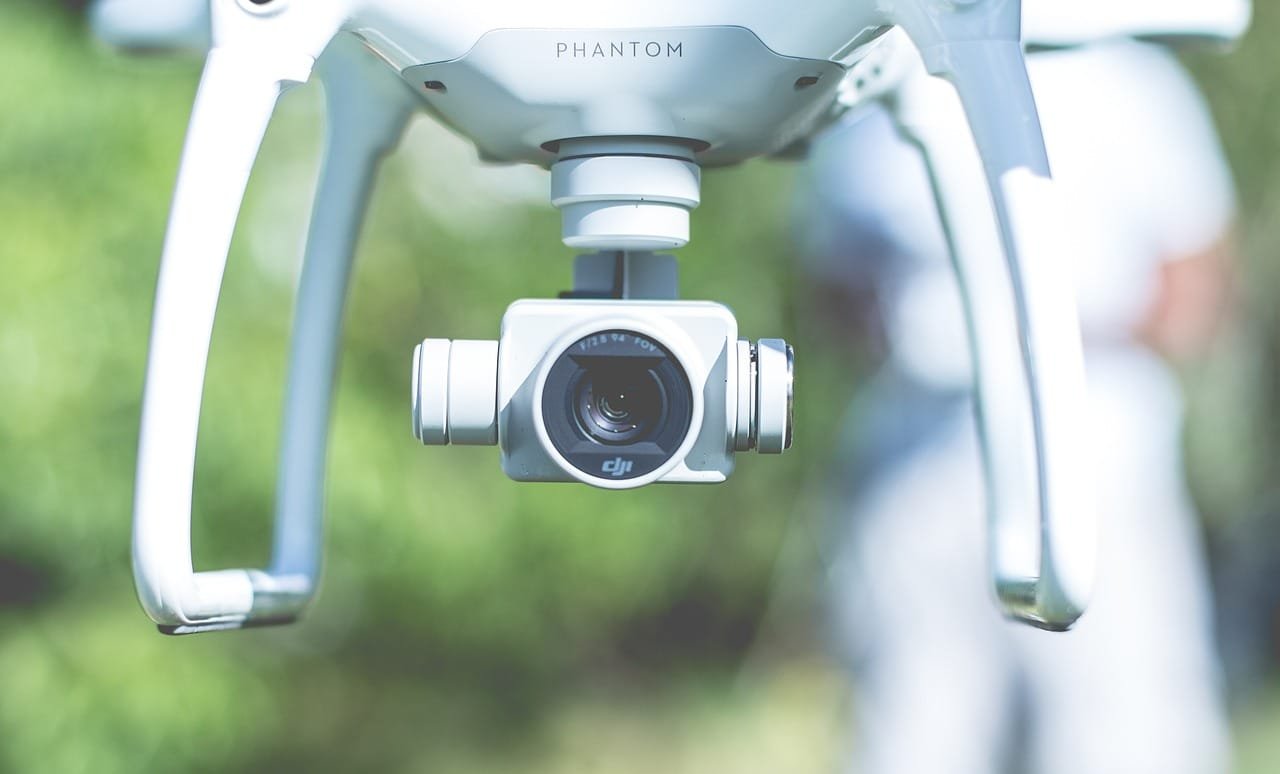Technology
Tips for Editing Drone Footage to Enhance Your Travel Videos

Introduction
Making and sharing travel movies is a great way to preserve the beauty of your experiences. Stunning aerial views are available with drone footage in particular, which can add a unique touch to your travel videos. But capturing the video is just half the fight. You must concentrate on skillfully editing your drone footage if you want to genuinely improve your trip movies. Here are some professional suggestions to help you improve the quality of your drone footage and create visually attractive travel videos.
1. Organize and Review Your Footage
It’s crucial to arrange your footage before beginning the editing process. This step guarantees that you won’t have to waste time looking for particular times and that you can quickly access the best clips. To begin, load all the drone footage into your editing program and arrange it into groups according to the places or events that were recorded.
Once everything is in order, watch through all of your footage. Examine each video to determine which photos are the greatest and which ones can be thrown away. This will assist you in producing a final video that is more polished and unified. Additionally, keep an eye out for any unintentional camera motions or exposure problems that may require post-production correction.

2. Stabilize Your Drone Footage
Some images may appear unsteady owing to wind or quick motions, even with the best drones. For your vacation videos to look professional, you must stabilize your footage. Numerous editing systems come with built-in stabilizing features, including Adobe Premiere Pro and Final Cut Pro. By using stabilization, jerky camera motions can be eliminated and the watching experience made more seamless.
When employing stabilization, exercise caution though, as overuse can lead to strange warping effects. To make sure the effect is natural and doesn’t erode the quality of the video, always preview your stabilized clips.
3. Enhance the Colors with Color Correction and Grading
Color grading and correction are two of the most important parts of editing drone video. These two procedures have the power to drastically alter the appearance of your video and add the appropriate atmosphere.
Color correction is a process that modifies video to make it appear more realistic. In this stage, exposure correction, contrast adjustment, and white-level balancing are usually performed. Make sure the sky is clear and the colors of the surroundings are realistic when using drone video.
Contrarily, color grading is a more artistic procedure. You can use color filters or LUTs (Look-Up Tables) to impart a specific mood or tone to your travel video.
Most video editing tools provide color grading, and there are numerous free or paid LUTs available that can give your footage a cinematic look.

4. Use Slow Motion to Highlight Key Moments
Your trip videos can benefit from the dramatic effect that slow-motion views can bring, as they highlight significant moments and let the audience take in the breathtaking environment. Slow-motion photography with drone video is ideal for capturing expansive vistas and vast landscapes.
Make sure your drone is recording at a high frame rate (60 fps or more) in order to get the best results. This way, you may slow down the video without it looking jagged. Use slow motion carefully to avoid diluting the effect by using it too often.
5. Add Transitions for a Smooth Flow
Your vacation video’s flow and timing can be significantly impacted by how you switch between footage. While more gradual transitions, such as dissolves or fades, are better suited for slower, more cinematic sequences, simple-cut transitions can be effective in producing a fast-paced, dynamic video.
Steer clear of eye-catching transitions when editing drone footage since they may detract from the content. Rather, strive for transitions that are smooth and improve the photos’ organic flow. For example, cross dissolves can work well to provide a seamless and attractive transition between two aerial images, you can use video-making apps to do so.

6. Incorporate Music that Matches the Mood
Selecting the appropriate background music is crucial for establishing the mood of your trip video. The emotional effect of the video should be increased by the music, which should go well with the images. For instance, a lively soundtrack is perfect for an action-packed, fast-moving video, whereas a more somber one is best for serene scenery.
Ensure that your cuts are in time with the music. Your video might have a more rhythmic flow and viewer engagement if you edit to the beat. Think of changing the music’s tempo as well; use softer tracks for calm drone shots and more aggressive songs for action-packed scenes.
There are many royalty-free music sites available, such as Artlist and Epidemic Sound, where you can locate excellent songs that complement the tone of your video.
7. Add Text and Titles to Provide Context
You might want to explore using titles and text to give your travel film more structure. Names of the locations, dates, and even succinct summaries of the scenes can be included. This can give your video a narrative touch and assist the viewer in understanding where the footage was taken.
Make use of professional, clean typefaces that don’t compete with the images. Subtle but helpful titles that enhance rather than take away from the video are ideal.
8. Adjust the Speed for Dynamic Sequences
Changing the pace of some of the clips in your drone video is another great method to improve it. You can give your video more drama and vitality by using a technique called speed ramping, which is progressively changing the clip’s speed. For example, you could begin a clip at a regular pace, pick up speed when the drone crosses a large area, and then reduce the speed once more for a crucial scene.
Since speed ramping is a sophisticated technique, use your editing tools to practice and experiment with it. If done well, it can provide a distinct, cinematic air to your travel movie.
9. Apply Lens Corrections for a Professional Look
Wide-angle drone cameras frequently capture footage with a fisheye effect, in which the frame’s edges appear warped or curved. This can sometimes be visually pleasing, but it can also take away from the realistic feel of your vacation film.
This distortion can be corrected with the lens correction features found in most editing programs. By doing lens corrections, you can ensure that horizons and landscapes are exact and straight, giving your movie a more polished look.
10. Add Ambient Sounds to Enhance Immersion
Think about including background noise in your drone video to help your audience feel even more fully immersed in your trip. For a beach scene, you may add the sound of breaking waves, or for a forest sequence, the sound of birds singing. By including background noise, the video comes to life and immerses the audience in the scene.
Pay attention to keeping the sound levels balanced. It is important that the sound effects and music don’t overshadow one another. You may make for a more interesting and immersive watching experience by carefully adjusting the soundtrack.
11. Tell a Story with Your Editing
Lastly, keep in mind that the most interesting travel videos convey a narrative. Consider the story you want to tell rather than just putting together gorgeous drone photos. This might be a narrative about your travels, the civilizations you met, or the breathtaking scenery you saw.
Your video should begin with a setting-the-scenes picture and work its way up to the most amazing parts. For the finale, use your best drone footage, and wrap things up with a powerful closing shot that makes an impression.
You may make a vacation film that is more memorable and powerful for your audience by organizing it around a clear story.
Conclusion
To sum up, you may greatly improve the caliber and impact of your trip videos by editing drone footage. You may craft an engrossing narrative that perfectly conveys the splendor of your journeys by meticulously choosing the greatest pictures, boosting the colors, incorporating seamless transitions, and matching your footage with the appropriate soundtrack. These editing strategies will not only help you communicate the core of your trips more efficiently, but they will also make your movies more entertaining. With a little effort and imagination, you can make your travels come to life in an engaging and visually spectacular way with travel videos that will stick with viewers.
Also Read: TechSolving Payroll Headaches: How Payroll Software Can Streamline Compliance?
-

 Celebrity1 year ago
Celebrity1 year agoWho Is Jennifer Rauchet?: All You Need To Know About Pete Hegseth’s Wife
-

 Celebrity1 year ago
Celebrity1 year agoWho Is Mindy Jennings?: All You Need To Know About Ken Jennings Wife
-

 Celebrity1 year ago
Celebrity1 year agoWho Is Enrica Cenzatti?: The Untold Story of Andrea Bocelli’s Ex-Wife
-

 Celebrity1 year ago
Celebrity1 year agoWho Is Klarissa Munz: The Untold Story of Freddie Highmore’s Wife
















